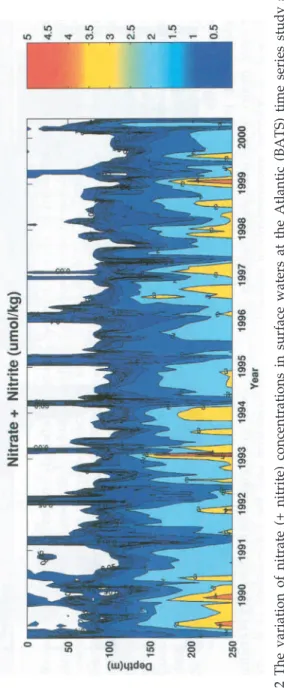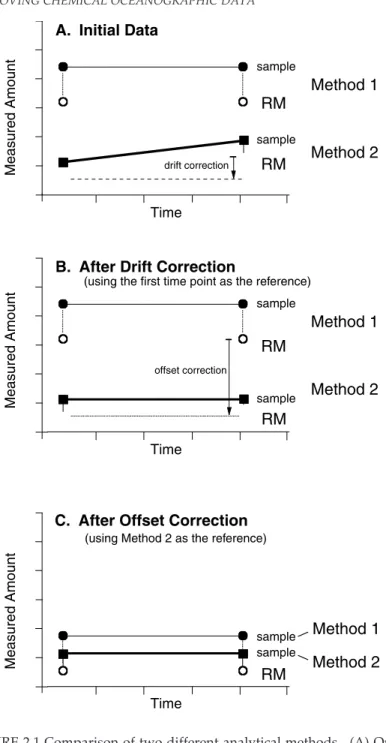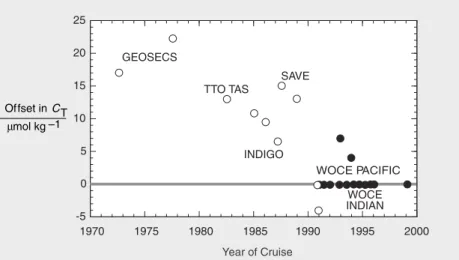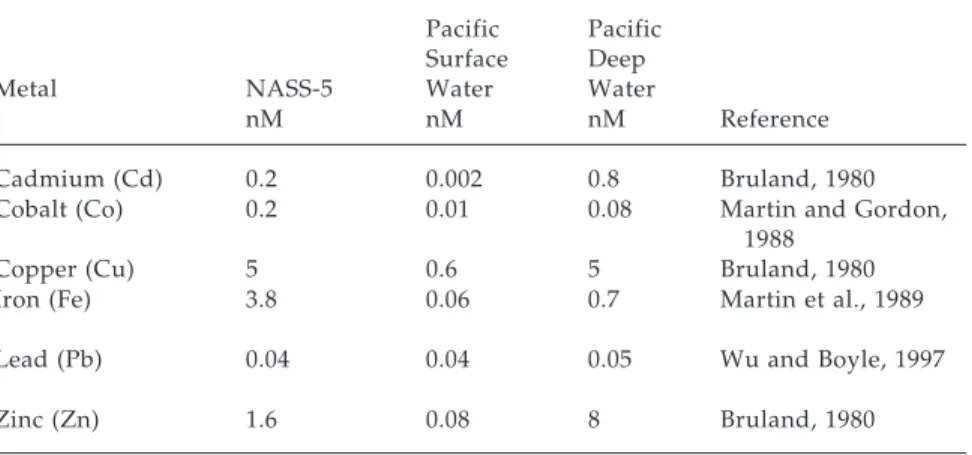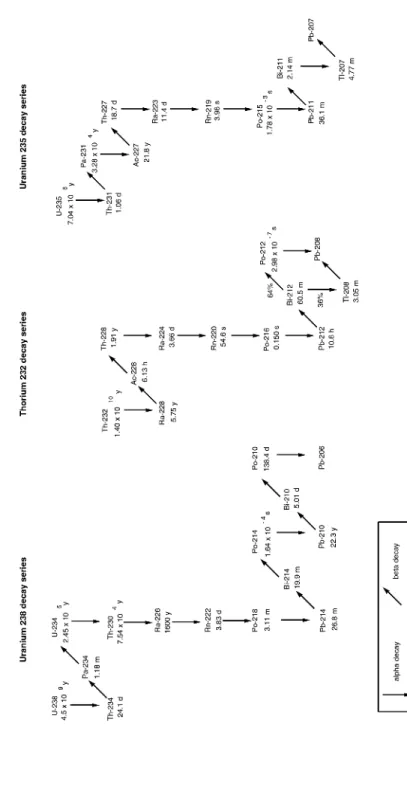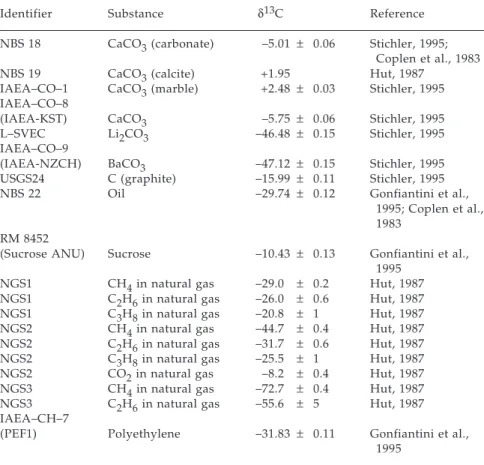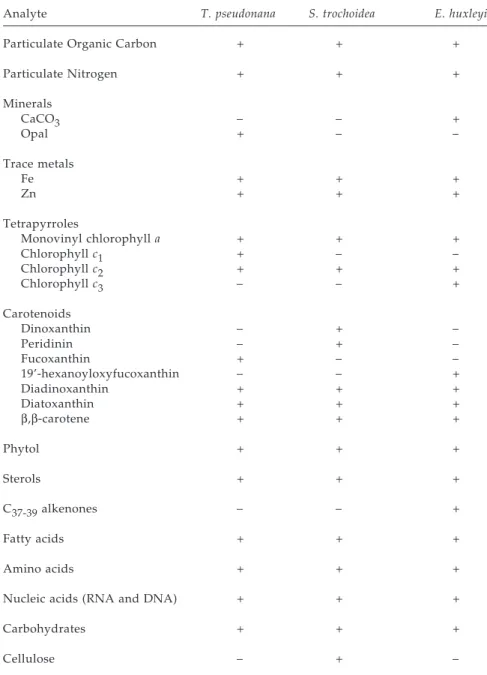Chemical reference materials play a crucial role in the verification of the quality of these measurements. In addition, members with competences in the use of reference materials for the analysis of trace metals, radioisotopes, nutrients, carbon and organic matter were represented. Influence of matrix composition on chemical determinations, 57 reference materials currently available for analysis of.
Reference materials for measurements in seawater, particles in the water column and sediments are missing for a number of important parameters. In addition, the National Institute of Standards and Technology is currently preparing a number of standard reference materials that will be of immediate use to the ocean science community. The use of reference materials should be explicitly addressed in the project planning stages, proposals and publications.
For the purpose of this report, the committee focused on reference materials for chemical composition measurements used in the ocean sciences. Regardless, many research problems in the ocean sciences would benefit from the availability of suitable reference material.
The committee recommends that these reference materials be further investigated by the scientific community to establish their usefulness for a wide range of constituents such as trace metals, organic compounds and radioisotopes. Subsequently, consensus values for the concentrations of particular constituents must be assigned to many of these reference materials, further enhancing their usefulness. Considerable discussion arose in deciding how to rank this report because of the two-pronged nature of the problem.
Should reference materials be thought of (and thus grouped for discussion) by analyte or matrix. Each of the natural materials occurring in the marine system - seawater, biological materials and sediments - provides a very complex mixture of constituents. Nevertheless, each matrix addresses particular scientific questions and presents particular challenges; the committee therefore chose to organize its discussion in the form of sample matrices.
Initial Data
After Drift Correction
After Offset Correction
A major contribution of the JGOFS effort has been the production and distribution of reference materials for oceanic measurements. However, during a recent Indian Ocean expedition as part of the WOCE Hydrographic Program, members of the US Offsets were found among the results of several laboratories, indicating inconsistencies in the preparation of the calibration standards.
In the 1970s, the Sagami Chemical Research Center in Japan provided nutrient reference material for the Cooperative Kuroshio Current Study (so-called CSK standards). There are a variety of molecular indicators of freshness (and possibly nutritional quality) of organic matter. For a discussion of the various steps of the certification process and the requirements for reference materials for a wide variety of specific substances, see Stoeppler et al.
In the case of acquiring large-scale data sets, the advantages of using reference material are self-evident. This involvement will ultimately create a better understanding of the future needs for certified reference materials. A significant portion of the needs for reference materials for seawater trace metal studies will be addressed by the preparation of these materials.
Carbon, hydrogen, nitrogen, sulfur, and oxygen stoichiometry in particles of western North Pacific marginal seas. Digestion and changes in the biochemical constituents of a diatom (Thalassiosira weissflogii) ingested by a herbivorous zooplankton (Calanus pacificus). Comparison of three oxidation methods used for the analysis of dissolved organic carbon in seawater.
The deplorable state of the description of the use of certified reference materials in the literature. Anthropogenic changes in the 13C/12C of dissolved inorganic carbon in the ocean as a tracer of CO2 uptake. Bacterial utilization of dissolved glucose in the upper water column of the Gulf of Mexico.
Horizontal and vertical distributions of organic particles in the Pacific sector of the Antarctic Ocean. Hedges was a member of the NRC Committee on Oceanic Carbon and a member of the Ocean Studies Board.
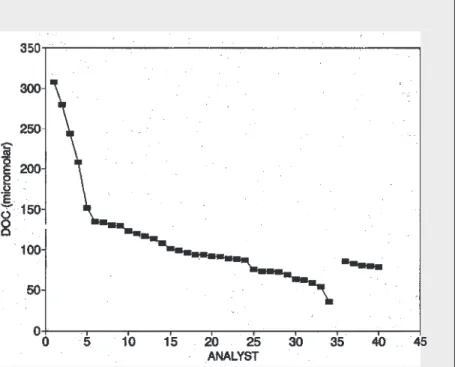
C Glossary
CAM (Crassulacean Acid Metabolism) photosynthetic pathway: A variant of the C4 pathway; phosphoenolpyruvate fixes CO2 to C4 compounds during the night, and then the fixed CO2 is transferred to ribulose bisphosphate of the Calvin cycle within the same cell during the day. Certified reference material: Reference material, accompanied by a certificate, one or more of whose property values are certified by a procedure that establishes its traceability to an accurate realization of the unit in which the property values are expressed. and for which each certified. value is accompanied by a statement of uncertainty at a certain confidence level. Consensus value (of a certain quantity): For a reference material, the value of the quantity obtained by interlaboratory testing, or by agreement between relevant bodies or experts.
However, it is believed that this information is of essential interest to potential users of the reference material. Isotope dilution: The condition that occurs when a stable isotope of the analyte metal is added to seawater. Primary Standard: The standard that is defined or widely accepted as having the highest metrological qualities and whose value is accepted without reference to other standards of the same quantity within a given context.
Salinity: a measure of the salt content of seawater (approximately the weight (g) of dissolved inorganic matter in 1 kg of seawater. Secondary standard: a standard whose value is assigned by comparison with a primary standard of the same amount. Traceability: the property of the result of a measurement or value of a standard, at which can be linked with said uncertainty to said references, usually national or international standards, through a continuous chain of comparisons.
CSIA compound-specific isotopic analysis CSK Cooperative Study of the Kuroshivo DIC dissolved inorganic carbon. Any current comprehensive, printed list of reference materials for ocean science will quickly become out of date as new materials are produced and others fall out of stock. Another list of environmentally relevant reference materials is maintained on the IAEA website (http://www.iaea.or.at/programmes/ . nahunet/e4/nmrm/).
Nevertheless, this database is not limited to marine science applications (they actually represent a very small fraction of available reference materials) and is not very user-friendly. Thus, there is a need for a searchable, marine science-specific database of currently available reference materials, and one of the recommendations of this report is that such a database be developed and maintained by the marine research community. Andrew Dickson: http://www-mpl.ucsd.edu/people/adickson/CO2_QC/. Contact: [email protected]).
